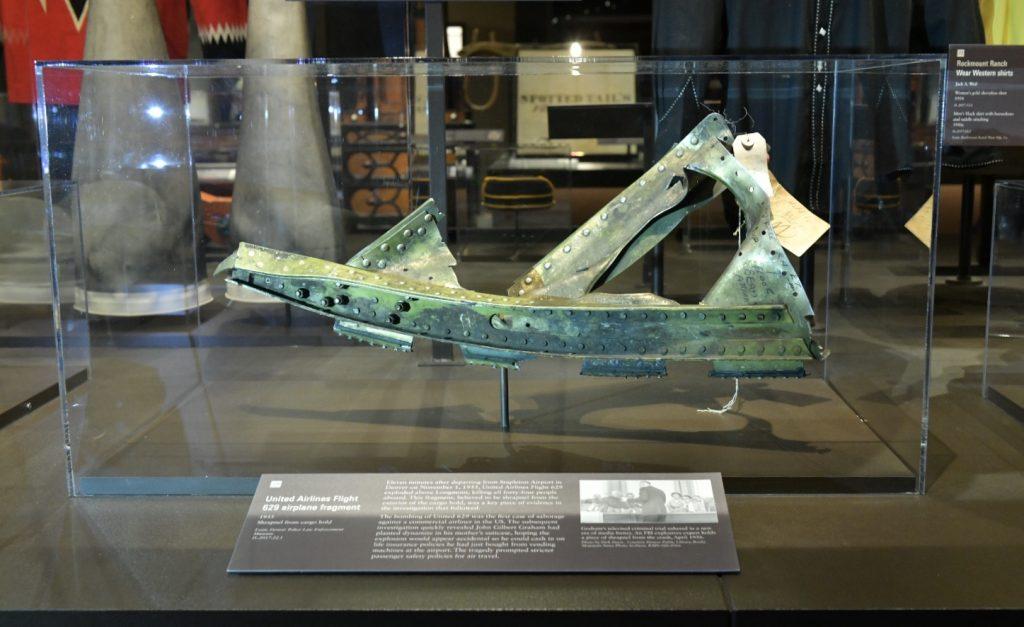The Bombing of United Air Lines Flight 629
A ‘scene of death and horror’: The night a son blew up his mother’s flight over Colorado
(TheDenverChannel.com) — Conrad Hopp can talk about supper that night, how he and his family sat down for a meal in the house where he grew up, on a farm east of Longmont. It was the first of November, 1955, and Hopp was 18, less than a year out of school. The family had spent all day in the fields, like so many days before, harvesting sugar beets.“And then we hear this loud explosion that shook all the windows in the house,” Hopp said. “We looked outside, and we could hear the roar of the engines — that’s how you knew it was a plane — and the ball of the fire coming through the air.”
Hopp and his brother ran outside and lost sight of the flaming wreckage behind the outbuildings of the farm. They jumped in Conrad’s car, a ’54 Chevy, and drove across the rows of alfalfa, dodging debris that had fallen from the sky. They reached an irrigation ditch and a thicket of trees, and Conrad parked the car, his headlights shining on the back of an airline seat.
His brother climbed over a fence and ran to the wreckage.
“Go get some coats,” he yelled to Conrad, as a chilly night set in.
Here in his memory is where Hopp stops himself.
“I’m sorry,” he says. “I can’t do this.”
When he turned back to his car, he saw the front of the airline seat and a body still strapped in by the seatbelt…

Plane Fragment from United Air Lines Flight #629
On November 1, 1955, at 6:52 pm, United Air Lines Flight #629 departed from Stapleton Airfield in Denver. Eleven minutes later the plane exploded, killing all 44 people onboard and scattering debris over Longmont, Colorado. The plane fragment, preserved by the Denver Police Museum, displays what is thought to be a shrapnel hole from the cargo hold explosion beneath the passenger cabin of the plane.
The fragment is a symbol of the first confirmed case of sabotage against a U.S. commercial airliner. The bombing of Flight #629 led to an early example of the successful cooperation of federal, state, and local law enforcement agencies, as each supported the other in the investigation of this crime.
The plane fragment was included as one of Colorado’s Most Significant Artifacts in 2015. The program, sponsored by History Colorado, highlights the importance of historic and cultural heritage and honors and recognizes all the organizations in Colorado that care for and preserve photographs, documents, rare books and manuscripts, audio recordings, film, digital materials, art, and historic, archaeological and natural science specimens.
